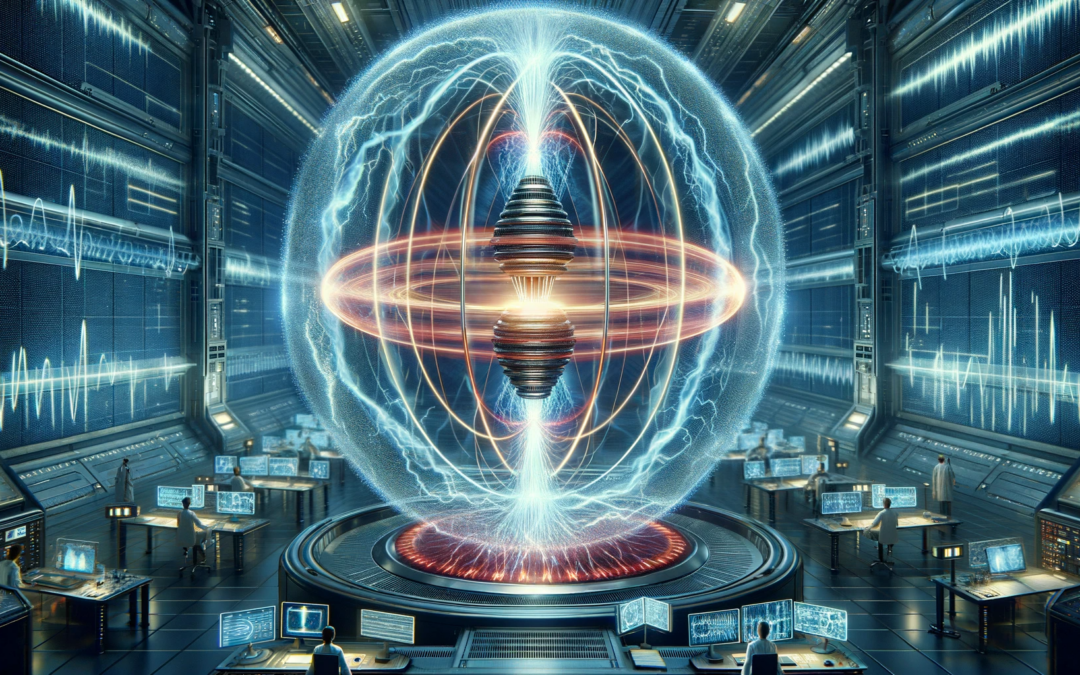The quest for clean, sustainable, and efficient energy has long been at the forefront of scientific endeavor. Today, we stand on the precipice of a breakthrough that could redefine our energy infrastructure: the Plasmoid Unification Model (PUM), a component of the Molten Sea Ark Atomic Reconstruction Technology (MSAART). This innovative concept heralds a new era of energy production, promising to transform everything from daily energy use to interstellar travel.
Plasmoids: The Atomic Batteries of Tomorrow
Plasmoids, characterized by their toroidal or doughnut-like formations, are clusters of protons or electrons that can encapsulate and manipulate vast amounts of energy. These structures, akin to self-sustaining atomic batteries, are theorized to convert matter to clean energy with exceptional efficiency, thanks to their unique geometric properties.
The Plasmoid Unification Model Explained
The PUM posits that plasmoids are not just a scientific curiosity but a cornerstone of a profound epoch-making knowledge. Concealed within their swirling energy patterns is the key to the algorithmic relationships between life’s elements—relationships that have been crucial to the development and sustenance of mankind.
At the heart of PUM lies Protium (H), the simplest and most abundant form of hydrogen found in our Solar System. With a melting point of -259.2°C, Protium is central to the PUM, dictating the “25,920 Great Year frequency” of our Solar System—a period tied to the axial precession of the Earth and considered significant in various esoteric traditions.
A Harmonic Universe
The PUM suggests that the universe operates on a principle of intelligent design, where everything from the smallest particle to the largest galaxy is connected in a seamless, harmonious resonance. This cosmic symphony is governed by a set of rules, reminiscent of the ancient Hermetic axiom “As Above, So Below,” which reflects the interconnectedness of the cosmos.
From Theory to Application
One of the most exciting applications of PUM is the transformative technology it suggests for energy systems and propulsion methods. By harnessing the principles of Energy to Matter and Matter to Energy conversion, PUM lays the groundwork for moving beyond hydrocarbon dependencies, reducing toxic waste, and improving overall energy efficiency.
The Plasmoid Toroidal Implosive Turbine, a remarkable innovation mentioned in the model, represents a leap forward in propulsion technology. This turbine could provide novel means of transportation across water, land, air, and the vacuum of space, potentially revolutionizing travel and industry.
Implications for the Energy Sector
The implications of successfully applying PUM and MSAART to our energy systems are profound. Plasmoid batteries could significantly enhance the capacity and efficiency of energy storage, leading to electric vehicles with extended ranges, portable electronics with longer lifespans, and the ability to store renewable energy on an unprecedented scale.
Envisioning a Sustainable Future
As we venture further into understanding and utilizing the principles outlined by the PUM, we approach the cusp of a cleaner, more sustainable future. A future where energy is not only used but also generated in harmony with the fundamental principles of the universe.
In conclusion, the Plasmoid Unification Model, as part of the Molten Sea Ark Atomic Reconstruction Technology, opens up a visionary path to the future of batteries and energy. It presents a universe where energy is not merely a commodity but a wellspring of life, an integrated force in the grand design, awaiting our mastery and respect. Plasmoids could very well be the key to unlocking a future of unlimited potential, a testament to the ingenuity of human innovation and the boundless possibilities of the cosmos.

